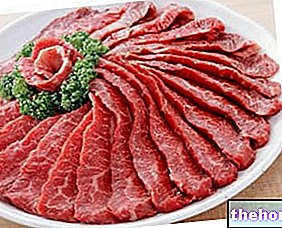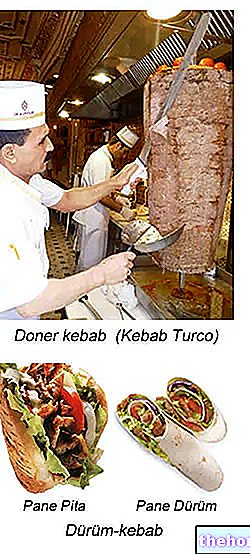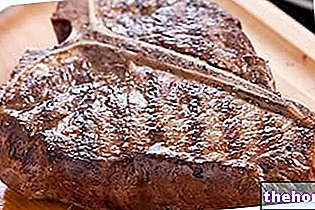The dangers induced by the excess of red meat in the diet are directly proportional to the abuse of its consumption.
A frequency of two or three portions of meat a week does not seem to contribute to the pathogenesis of any disease, it being understood that the whole diet is balanced and the cooking methods are suitable.
Cardiovascular diseases

Although with a certain variability in the sources consulted, the meat of ox, cow, bull, sheep, horse, mutton, buffalo and adult pig belong to the category of red meat.
The percentage of saturated fat varies not only according to the animal species, but also and above all according to the cut of meat.
Animal products, therefore also red meat, are foods that contain saturated lipids and bring more or less important quantities (depending on the cut and portion) of exogenous cholesterol. Therefore, the first danger referred to by the abuse of red meat is the alteration of lipidemia.
An excessive intake of dietary cholesterol and saturated fatty acids can cause (especially in sedentary and predisposed subjects) a direct and indirect increase in total cholesterol and especially in LDL lipoproteins. This results in an increased cardio-vascular risk due to the formation of atherosclerotic plaques that end up occluding the blood vessels.
Osteoporosis
Red meat provides a significant amount of animal protein and from each portion (200-300g) derives about 40-60g. The abuse of the consumption of animal proteins carries a rather important risk of developing a reduction in the metabolic efficiency of calcium. Therefore, if introduced in excess, animal proteins could favor the onset of a bone pathology called osteoporosis. However, not all authors agree in considering the high-protein diet a risk factor for osteoporosis, since the same, in addition to increasing the "urinary excretion of calcium, exerts a positive effect on its intestinal absorption; it also seems to stimulate the secretion of osteo-anabolic hormones, such as IGF-1. In any case, the hypercalciuria associated with high-protein diets can be effectively compensated by the simultaneous and generous intake of alkalizing foods (fresh fruit and vegetables).
Renal Fatigue
The increase in the amino acid intake deriving from animal proteins also determines the increase in azotemia levels, as the amino acids that are not used in anabolic processes constitute a substrate for neoglucogenetic and liposynthetic transformation.
This occurs in hepatocytes (liver cells) after deamination (deprivation of the amino group) of the nitrogenous groups from the carbonaceous skeleton. Catabolites, which are mainly composed of ammonium, need a "final conversion into urea to be expelled in the urine."
The protein excess of the diet favors the accumulation of urea causing continuous and persistent kidney fatigue. According to many studies, this condition could lead to serious disorders such as chronic nephritis.
Gout
As if that weren't enough, red meat is one of the foods that provides the greatest amount of purines; these derive from the digestive catabolism of nucleic acids, which following metabolization favor hyperuricemia. In other words, among the dangers deriving from the excess of red dogs there is also the risk of hyperuricemia (gout) and related osteo-articular complications (sediment and precipitation of crystals) and kidney (stones).
Gastritis and Reflux
The digestion of red meat considerably engages the stomach which secretes large quantities of hydrochloric acid (HCl). The lowering of the pH is fundamental for the correct protein denaturation and for the activation of the pepsinogen in pepsin; however, a large protein content determines the slowing down of the travel times of the chyme, due to the long stay in the gastric tract. In subjects who abuse red meat, especially cooked for a long time and in the evening, gastric and duodenal acidosis increases the risk of gastritis, ulcers and stomach cancer.
For the same reason, in subjects predisposed to or suffering from incontinence of the lower gastroesophageal sphincter, an increase in the incidence of gastric reflux is observed which, in the long term, causes esophagitis, Barrett's esophagus and probably esophageal cancer.
Red Meat and Tumors
Regardless of the amount of protein, the excessive consumption of red meat also favors the indirect increase of some dangers inherent in the neoplastic (tumor) incidence of the stomach and intestines.
The residues of nitrites used in agriculture and those added for preservative purposes in processed meats combine with food amines forming nitrosamines. The high and frequent consumption of sausages containing nitrates and nitrites determines the increase in the combination of nitrosamines, which possess a very high carcinogenic power in the stomach.


-nelle-carni-di-maiale.jpg)













.jpg)











